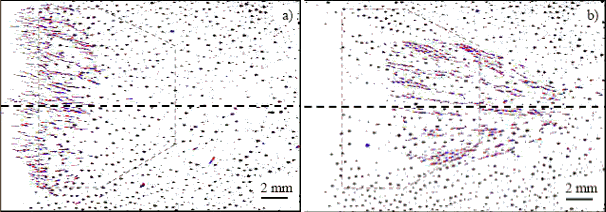PK-3 Plus
Some
Results (2)
|
2. Phase separation in binary mixtures
The formation of lanes is an omnipresent phenomenon in nature when two
groups of particles pass through each other with the particle density
and the driving force in a certain range. Then the particles arrange
collectively in stream lines to minimise energy when passing. This
phenomenon is well known from the dynamics of people in a crowded
pedestrian zone, as well as of granular mixtures, colloidal fluids,
lattice gases and molecular ions. So, this phenomenon is a universal
generic process of interest in many different fields in physics.
PK-3 Plus experiments on board the space station allowed us to study
this process for the first time in a complex plasma.

Fig. 2: 'Lane Formation' in a complex plasma on board the space station.
A short injection of small micro-particles (coming from the left side)
into a cloud of larger particles.
The smaller particles tend to go to the center of the discharge (on the right
edge of the field of view), so they have to penetrate the cloud of the larger
particles. In the first phase of the process they arrange in single stream lines
('lanes', left image), in the second phase the lanes combine as they close in to
the center (right images). Each image shows the trajectories of the
particles overlayed from several video frames color-coded from red to blue.
A movie of this experiment is shown
here.
Publication: R. Sütterlin, Phys.Rev.Lett. 102, 085003 (2009).
More results (2)...
Updated: 2010-10-21
Contact: Michael Kretschmer

|
